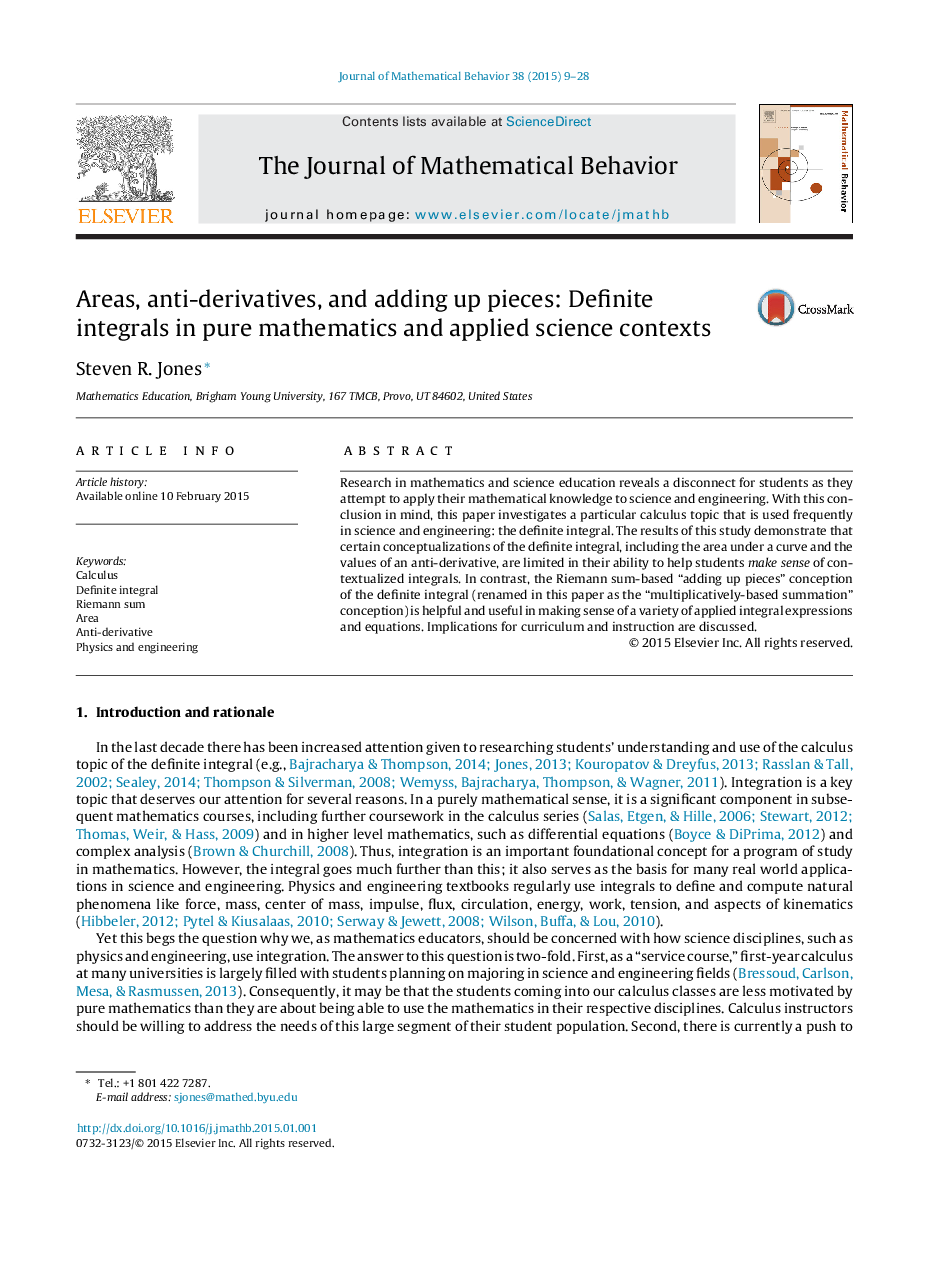| Article ID | Journal | Published Year | Pages | File Type |
|---|---|---|---|---|
| 360655 | The Journal of Mathematical Behavior | 2015 | 20 Pages |
•Three conceptualizations of the definite integral are analyzed in mathematics and science contexts.•All three conceptualizations are productive for decontextualized mathematics integrals.•Those based on area under a curve and anti-derivatives are less productive in applied contexts.•The Riemann sum-based adding up pieces conceptualization is highly productive in applied contexts.
Research in mathematics and science education reveals a disconnect for students as they attempt to apply their mathematical knowledge to science and engineering. With this conclusion in mind, this paper investigates a particular calculus topic that is used frequently in science and engineering: the definite integral. The results of this study demonstrate that certain conceptualizations of the definite integral, including the area under a curve and the values of an anti-derivative, are limited in their ability to help students make sense of contextualized integrals. In contrast, the Riemann sum-based “adding up pieces” conception of the definite integral (renamed in this paper as the “multiplicatively-based summation” conception) is helpful and useful in making sense of a variety of applied integral expressions and equations. Implications for curriculum and instruction are discussed.
